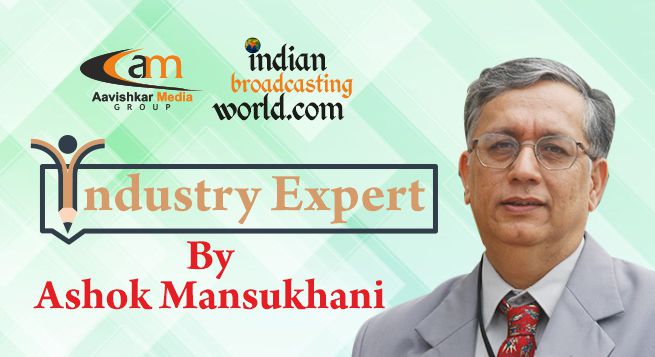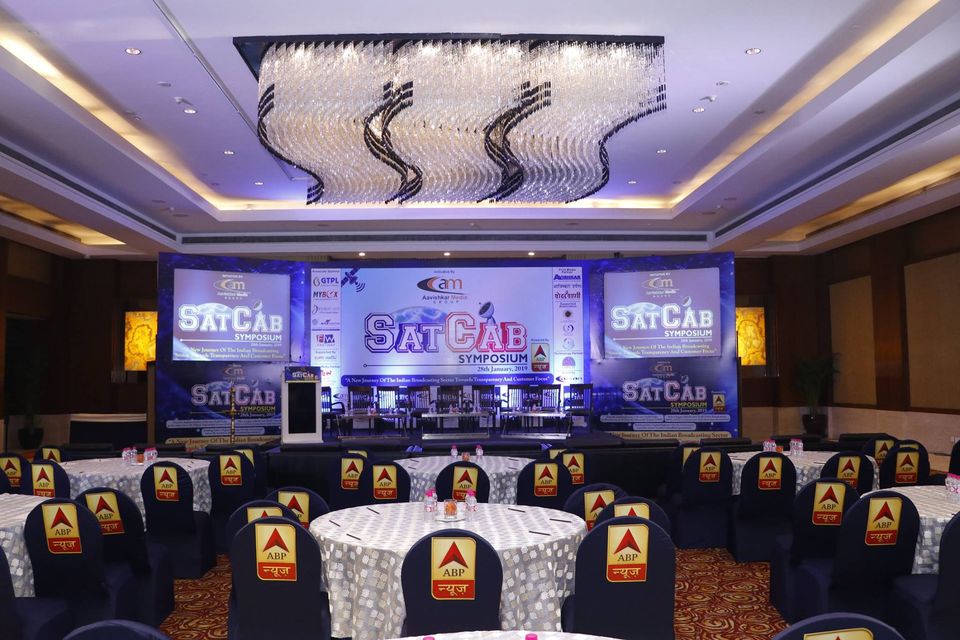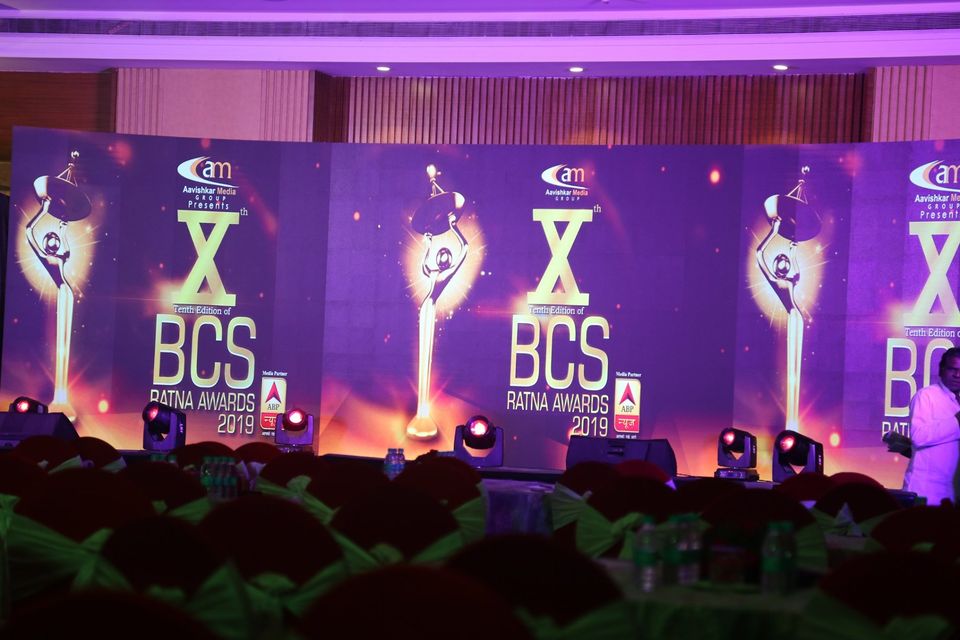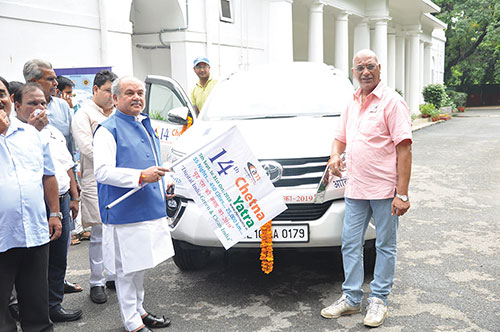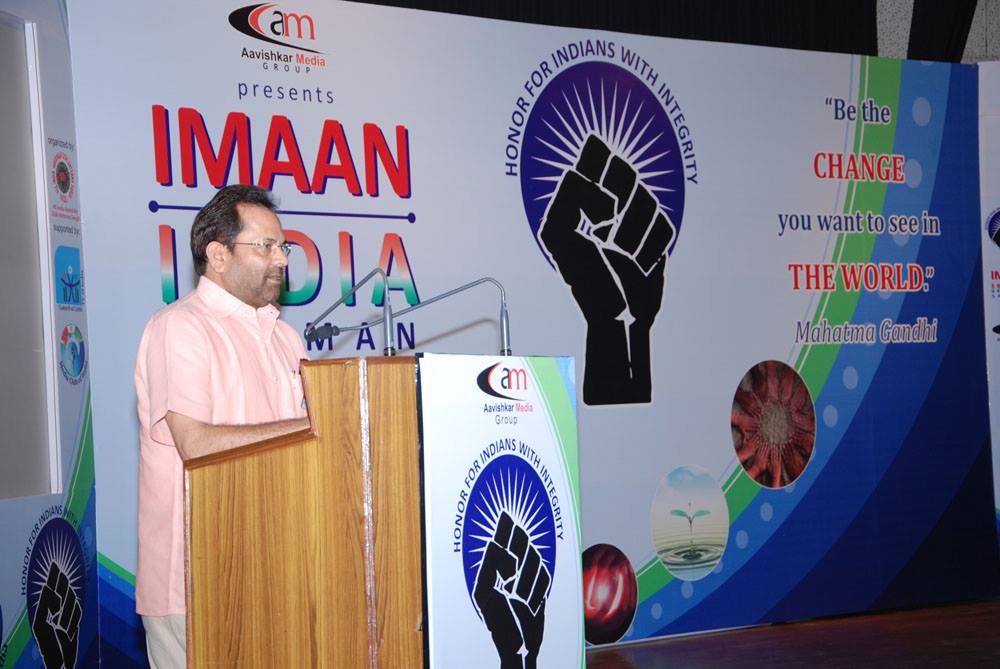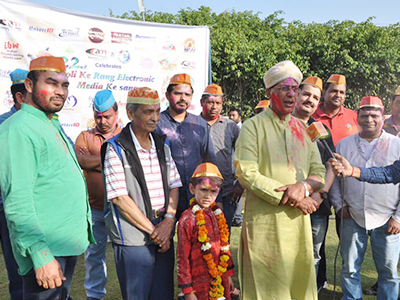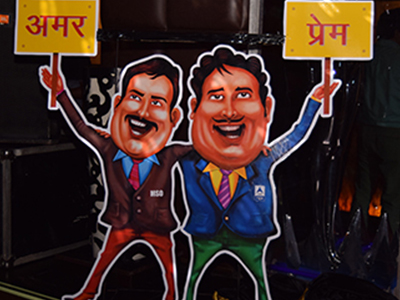A. BACKGROUND TO NEW TARIFF ORDER:2
1. On 01.2020, the Telecom Regulatory Authority of India (TRAI) issued amendments to the Digital Tariff Order (popularly known as N.T.O.:1) issued earlier on 03.03.2017 titled The Telecommunication (Broadcasting and Cable) Services (Eighth) (Addressable Systems) Tariff Order, 2017 (Tariff Order 2017).
2. The Explanatory Memorandum to the amended Tariff Order issued on 01.2020 had given the rationale for the new amendments stating:
- Collectively the three determinations (Tariff Order/Interconnection Regulations and Quality of Service Regulations 2017) completely overhauled the Regulatory framework for the Sector of the analogue era. The process of implementation of this framework started on December 29 2018.
- Given the size and structure of the Sector and the nature of changes that the new framework may warrant in the systems and business relations of the stakeholders, the Authority was well aware of the fact that there could be some transient problems for the new framework to settle for the gains from it to be fully visible.
- The Authority had extensive interactions with the stakeholders, especially consumers and consumer organisations, as a part of this monitoring process which indeed highlighted certain issues, mostly related to tariffs.
- After comprehensive discussion on the issues raised by TRAI and analysing the myriad responses of service providers, consumer organisations and others, TRAI summed up the new amendments in its concluding part of the Explanatory Memorandum dated 01.2020 as under:
- Para 127.With the notification of this Tariff Order, the consultation process initiated on August 16 2019, stands concluded. The new regulatory framework has been in place for almost one year. The Authority believes in providing a stable and consistent Regulatory framework while allowing fair play of market forces for the benefit of all stakeholders.
- The Authority had made it clear that the consultation process is in no way intended to disrupt or destabilise the existing framework but has been initiated to sort out certain issues that were brought out to its notice by the stakeholders. These issues were of urgent nature, affecting consumers at large, the most vulnerable set of stakeholders. Ignoring the interests of consumers is not in the interest of the industry as well.
- Para 128. As may be seen from the amendments carried out through this Tariff Order, the consultation process has left the basic contours of the new regime untouched. The Broadcasters/D.P.O. s will continue to enjoy the flexibility in carrying out their businesses. The outcome of this exercise has been limited to certain consumer-friendly measures required to ensure that the objectives of the existing framework are fulfilled.
- A quick summary of these new measures (affecting Broadcasters) mandated by the Authority are summarised below:
- Provision of a time tested and industry accepted method to ensure that there is a reasonable relationship between the a-la-carte prices of pay channels and bouquet prices declared by Broadcasters. While forming the bouquets, the Broadcasters have to comply with the following twin conditions:
(a) the sum of the a-la-carte rates of the pay channels (MRP) forming part of a bouquet shall in no case exceed one and half times the rate of the bouquet of which such pay channels are a part; and
(b) the a-la-carte rates of each pay channel (MRP), forming part of a bouquet, shall in no case exceed three times the average rate of a pay channel of the bouquet of which such pay channel is a part.
- MRP of a channel should not be more than the MRP of any bouquet containing that channel in order to bring further reasonableness in the bouquet formation and pricing.
- Reduction of ceiling price of pay channel for inclusion in a bouquet from 19/– to Rs. 12/- so as to ensure fair packaging of bouquets, without altering the flexibility of Broadcasters to price their channels.
- Reasonable restrictions on the number of bouquets offered by Broadcasters – Number of bouquets of pay channels not to be more than the number of pay channels offered by a Broadcaster.
- Increasing the number of SD channels that can be provided within the NCF of 130/- per month from 100 to 200 and capping the NCF for more than 200 SD channels at Rs. 160/- per month.
- A Press Release issued by TRAI dated01.2020 explained the rationale for issuing the new amendments as under:
- Trai issued amendments to the Regulatory framework for the Broadcasting and Cable Services Sector on January 1 2020. The Amendments address the teething issues faced by the consumers while balancing the interests of Broadcasters and the DPOs to create a level playing field.
- The new framework introduced last year has been quite successful inharmonising business processes, reduced disputes among stakeholders, bringing clarity in channel pricing by displaying the price of every channel on an electronic program guide to consumers and enabling transparent subscriber reporting.
- The transparency has ushered in better tax compliance, thereby improving government revenue. The explicit revenue stream of Network Capacity Fee (NCF) and the MRP based pay channel prices have ensured that the revenues are distributed proportionately among the Broadcasters, DPOs and LCOs.
- NCF facilitates adequate returns to DPOs, thereby facilitating up-gradation of their networks, giving better services to consumers, and ensuring business certainty.
- The Broadcasters also benefitted by getting full freedom and flexibility to decide the price of their Television Channels.
- However, the intended benefit for consumers to enable the freedom of choice could not be achieved completely due to misuse of available flexibility by a group of service providers.
5. The Press Release of 13.01.2020 summed up the “benefits for Customers” as under:
- The amendments though have left the basic structure of the Regulatory framework unchanged, with very minor modifications targeted to address teething problems relating to smooth implementation. It provides complete freedom to Broadcasters/D.P.O. s to price their services while ensuring that consumers get the freedom to choose the TV channels.
- The review exercise has been limited to certain consumer-friendly measures, including those which are necessary to balance the interest of stakeholders.
- The summary of these new measures is as below:
- Now a consumer can enjoy 200 SD (plus mandatory channels) television channels in basic NCF of 130/- per month. Further, even for the higher number of channels, the maximum NCF has been capped @ Rs 160 per month.
- This will also benefit Broadcasters, especially News &Regional FTA channels, as there are higher chances of subscription of their channels.
- Provision of discounts in NCFs for multi-TV homes. DPOs shall not charge more than 40%of declared NCF per additional TV for 2nd TV connection onwards in a multi-TV home.
- Introduction of time tested and industry-accepted twin-conditions to ensure that there is a reasonable relationship between the prices of pay channels on an a-la-carte basis and the bouquet:
- Reduction of ceiling price of pay channel for inclusion in any bouquet from19 to Rs.12 so as to ensure fair packaging of bouquets. This will ensure a reasonable price of a channel on an a-la-carte basis.
- Flexibility to DPOs to declare different NCFs for different regions/are as with in its service area. This provision will help DPOs innovate and cater to local demands in their tariff offerings resulting in lower NCF in rural/remote areas.
- Flexibility for DPOs to offer promotional schemes. They can also offer discounts on NCF and Distributor Retail Prices (DRP) on long term subscriptions, having a duration of 6 months or above.
- Capping of the carriage fee@ Rs. four lakhs (Rs. 4 Lakh) per Standard Definition (SD.) Channel per month for a DPO This will ensure the viability of news, regional and niche channels.
- Full flexibility to the DPOs to organise the Television channels on EPG based on Language or Genre. The provision will safeguard consumers’ and Broadcasters’ interest’s vis-a-vis erstwhile “arbitrary manoeuvring” by DPOs. This will also save regional and smaller Broadcasters from any probable misuse by DPO.
- The Press Release also assured the service providers that sufficient time was being given by the Regulator to ensure smooth implementation of T.O.:2. It stated that:
- The amendments provide appropriate time to stakeholders for implementation. Broadcasters may publish revised MRP of a-la-carte channels and bouquets by January 15 2020. Similarly, DPOs may publish revised offerings on their website by January 30. Consumers will be able to benefit as per the amended provisions with effect from March 1 2020. The amendments will usher in better offerings, reduced NCF, more flexible tariff schemes and more choices for consumers. (Note: This deadline has been extended from time to time. The latest deadline is 01.12.2021)
- LITIGATIONS BLOCK EFFECTIVE NTO:2 IMPLEMENTATION
- BOMBAY HIGH COURT Writ Petition No 680 of 2020 [(WP (L) titled The Film and Television Producers Guild of India and Another vs UOI and Another.
- The amended Tariff Order resulted in multiple Writ Petitions being filed by Broadcasters and their industry organisation Indian Broadcaster Federation(IBF) in the Bombay High Court. The Petitions were clubbed and heard together, and a common Judgment passed on 06.2021.
- The Broadcasters had raised a series of objections to the amended Tariff Order. They had also challenged the Authority of TRAI to regulate them.
- The Bombay High Court heard the petitions at length and the response of TRAI.
LEGAL CHALLENGES BY BROADCASTERS
- The High Court, in its judgment, summarised the challenges raised by Broadcasters into various key issues for determination as under:
(i)Whether Section 11 of the Telecom Regulatory Authority of India
Act, 1997 violates the Petitioners’ fundamental rights under Articles 19(1) (a),19(1) (g), 14 and 21 of the Constitution of India. It ought to be declared constitutionally invalid, as far as it relates to Broadcasting Services.
(ii) Whether the impugned Principal 2017 Regulations and Principal 2017 Tariff Order (i.e., Principal 2017 provisions) violate the Petitioners’ Fundamental Rights under Articles 19(1) (a), 19(1)(g),14 and 21 of the Constitution of India and ought to be declared constitutionally invalid?
(iii) Whether the impugned 2020 Regulations Amendments and 2020 Tariff Order Amendment (i.e., 2020Amendments) violate the Petitioners’ fundamental rights under Articles 19(1) (a), 19(1)(g), 14 and 21 of the Constitution of India and ought to be declared constitutionally invalid? Para 5.
- Summary of Challenge By Broadcasters
- Constitutional Challenge to Section 11 of TRAI Act
(Paras 4-50 of the Judgment)
- The gravamen of the Petitioners’ challenge to Section 11 of the TRAI Act is Section 11(2). Section 11(2) empowers the Authority to fix rates of Telecommunication services, which includes Broadcasting Services, with which we are concerned in the present case.
- The Petitioners have fundamentally premised their challenge to Section 11(2) of the TRAI Act on the ground that it grants unlimited power to TRAI to curb the Petitioners’ freedom of speech and expression under Article 19(1)(a) of the Constitution. Para 5.
- The broad select submissions of the learned Senior Counsel/Counsel for the Petitioners on the challenge to Section 11 as being violative of their fundamental rights under Article 19(1)(a) are as follows:
- The fixation of rates or price in the exercise of the right of speech and expression is by its very nature and character a limitation or restriction on the freedom of speech and expression protected under Article 19(1)(a) of the Constitution. Restrictions under Article 19(2)of the Constitution can only be confined to the eight specified grounds and no other.
- The interest of the general public is not a ground available under Article 19(2). A law that infringes the right under Article 19(1)(a) cannot be saved with reference to consideration of public interest.
- Being an individual right under Article 19(1)(a) of the Constitution, there is no question of balancing interests, which is permissible only under Article 19(1)(g) of the Constitution – it is not a societal right or a community right or a public right, unlike price fixation which is a right in the interest of the general public or consumer or society.
- The intention and direct effect of impugned Section 11 is to limit and interfere with various facets of the right guaranteed under Article 19(1)(a), including circulation.
- The scope of freedom of speech is qualitative and quantitative, i.e., it lies both in content and circulation. The freedom of speech and expression under Article 19(1)(a) of the Constitution of India includes within its scope, at least the following four aspects –
(a) freedom to choose the content of the expression.
(b) freedom to circulate and disseminate the expression to the widest extent possible.
(c) freedom to choose the means of exercising the right; and
(d) freedom to be independent such that restrictions do not undermine its independence.
- Section 11 suffers from the vice of excessive delegation of power by the legislature in favour of TRAI and gives wide and unbridled power to regulate various aspects of Broadcasting Services, including packaging/offering of bouquet formations and pricing. There is a lack of guidance or guidelines to TRAI, which has resulted in TRAI arbitrarily and unreasonably restricting the reach/dissemination of content/programmes through television channels.
- It is lastly contended, in the alternative, that Section 11 of the TRAI Act may be read down to say that fixation of rates is only restricted qua carriage/infrastructure/interconnection aspects of Broadcasting Services and does not encompass any fixation of rates and other commercial terms at which TV channels (which are an expression of free speech) are offered. Para 8.
- Sheet Anchor of Petitioner’s Case/Respondents Reply
- The sheet anchor of the Petitioners’ case is the Judgment of the Constitution Bench of the Supreme Court in Sakal Papers Ltd. vs Union of India, (1962) 3 SCR 842[which involved a challenge to the constitutionality of the Newspaper (Price and Page) Act,1956 and the Daily Newspaper (Price and Page) Order, 1960 by the private newspaper that published daily and weekly editions], cited by all the learned Senior Counsel/Counsel on behalf of the Petitioners. Inviting our attention to Paragraphs 24, 25, 28, 31, 32,33-38, it is contended that the Judgment in Sakal Papers thoroughly answers the case of the Petitioners. Para 9.
- Reliance is also placed on the Judgment of a three-judge Bench of the Supreme Court in Ministry of Information and Broadcasting, Government of India vs Cricket Association of Bengal, (1995) 2 SCC 161 (MIB vs CAB for short). Our attention is invited to Paragraphs 36, 43, 44, 47, 64, 78, 82, 174, 175 of the judgment. Para 10.
- Learned Solicitor General, Addl Solicitor General, Senior Counsel/Counsels for the Respondents have strongly relied upon the Judgment of the three-Judge Bench of the Supreme Court in MIB Vs CAB, on which the Senior Counsel/Counsel for Petitioners also rely. They have also relied on some of the aforementioned judgments cited on behalf of the Petitioners and several other judgments contained in several compilations, most of which have been referred to by us hereinafter. Para 12.
-
Salient Features of the Judgment
A. Primary Goal of Authority vs Public Interest
- The primary goal of the Authority is to regulate the telecommunication services and to protect the interests of service providers and consumers of the telecom sector, to promote and ensure orderly growth of the telecom sector and for matters connected therewith or incidental thereto as can be discerned from the Preamble of the TRAI Act. It can, therefore, hardly be disputed that price fixation of Television channels is a concomitant of the Regulatory powers of TRAI and is conceived in the public interest. Para 22.
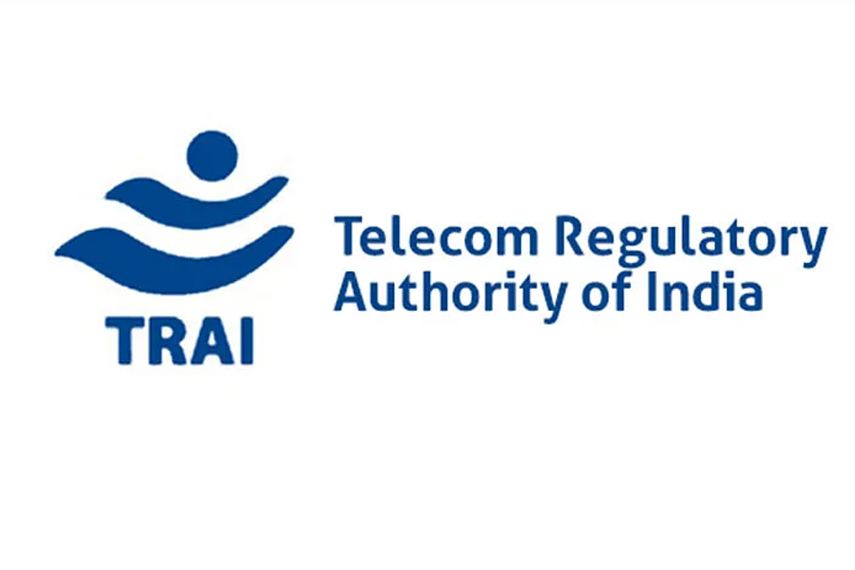
- Undisputedly, the Broadcasters have a fundamental right to freedom of speech and expression, but the said right is not absolute. Telecasting by satellite involves the use of airwaves which is public property. The Judgment of the three-Judge Bench of Supreme Court in MIB vs CAB has distinguished the decisions in Sakal Papers, Bennett Coleman, and Indian Express Newspapers, which concerned print media. Para 23
- Since Broadcasting involves the use of airwaves which is public property, the public interest is an inbuilt restriction apart from the restrictions in Article 19(2). Those airwaves are required to be controlled and regulated in the public interest. They have to be used for the benefit of society at large. Para 23.
- Regulation of telecom services in controlling the airwaves and protecting the interest of the public who own the airwaves may thus involve the imposition of reasonable restrictions, apart from the eight specified restrictions mentioned in Article 19(2).Para 23.
- To accept the contention of the Petitioners that Broadcasting Services cannot be regulated as that would infringe their right to free speech and expression under Article 19(1)(a) and that the interest of the public ought to be disregarded would be plainly contrary to what is held in the Judgment of the three-Judge Bench of the Supreme Court in MIB vs CAB. Para 23
- In the teeth of the said three-Judge Bench of the Supreme Court in MIB vs CAB, we do not see how it is really open for the Petitioners to contend that public interest cannot be taken into consideration in imposing any restrictions to the Petitioners’ right to freedom of speech and expression under Article 19(1)(a) of the Constitution or that Broadcasting Services cannot be regulated or that there can be no fixation of rates of Broadcasting Services under the Section 11(2) or for that matter any stipulations under Section 11(1)(b)(iv) of the TRAI Act which regulates sharing of revenue amongst service providers. Para 23.
- As airwaves are public property, TRAI acts in a fiduciary capacity to ensure that the rights of consumers are also protected and to balance the rights of the consumers with the rights of the Service Providers/Broadcasters and to ensure orderly growth of the telecom sector as stated in the Preamble of the TRAI Act. Para 27.
- Once it is held that the airwaves used by the Broadcasters are owned by the public, the public interest would perforce kick in. It cannot be kept out of consideration. The Broadcasters, therefore, would necessarily be required to be regulated in the public interest and to prevent the invasion of the rights of the public to freedom to be educated, informed, and entertained as held in MIB vs CAB. Para 27
- In our view, Broadcasters cannot be heard to say that they will use airwaves that are public property. Still, the interest of the public is disregarded. Hence, the entire edifice upon which the case of the Petitioners is founded, i.e., the restrictions can be confined only to the eight grounds specified in Article 19(2) of the Constitution, would be effaced. Para 27.
- The only aspect which can really be examined is whether in exercising the powers under Section 11(2) of TRAI, the stipulations made vide the impugned Regulations/Tariff Orders would constitute ‘reasonable restrictions’ [which is the expression used in Articles 19(2)] and/or are manifestly arbitrary/arbitrary and therefore violate the fundamental rights of the Petitioners, which aspect we have dealt with in the latter part of this judgment while dealing with the challenge to the impugned Principal 2017 provisions and impugned 2020 Para 27.
B. Whether Rate Fixation Affects Article 19 (1) (a) Rights
- Undoubtedly, fixation of rates of channels may impact circulation. Ordinarily, circulation would be inversely proportional to the price of the channel. In other words, the higher the price, the lower would be the circulation and vice versa (this has been recognised in Sakal Papers also). In our view, however, even if price fixation or reasonable stipulations are prescribed by the Authority may affect circulation to some degree, that by itself would not be an infringement of the Broadcasters’ rights to freedom of speech and expression and the right of the Broadcasters would be required to be “balanced” with the rights the citizens to access television channels at reasonable rates. Para 28.
- Moreover, in MIB vs CAB, it has been held that a citizen has a right that flows from the nature of the property involved, i.e., airwaves, which belong to the public. There would be a ‘limitation‘ on the Broadcasters’ rights to freedom of speech and expression. There is, therefore, in our view, a need to strike a balance between the competing rights of Broadcasters and the rights of the citizens to access the television channels at reasonable rates, as discussed hereinbelow. Para 30.
- Having regard to the principle of law laid in the aforesaid judgments, in our view, the fundamental rights of the Broadcasters cannot be considered in isolation, and a balance has to be struck between the competing rights of the Broadcasters vis-à-vis the rights of the citizens. A fortiori, the Petitioners’ contention that the intention and direct effect of impugned Section 11 are to interfere with various facets of the right guaranteed under Article 19(1)(a) including circulation, would be insubstantial. Para 32.
- Ordinarily, the fundamental rights of the Broadcasters would have to yield to the public interest. However, the Parliament, in its wisdom, keeping in view the need for promotion and orderly growth of the telecom sector, has enacted the TRAI Act not only to protect the interests of the consumers but the service providers as well, as can be discerned from the Preamble of the TRAI Act. Thus, a level playing field would be required to be maintained between the rights of the Broadcasters and that of the public. Para 32
- The contention of the Petitioners that being an individual right under Article 19(1)(a) of the Constitution, there is no question of balancing interests, cannot be countenanced and is rejected. Para 32.
- If the contentions of the Petitioners that there can be no price fixation or other stipulations including stipulations on the formation of bouquets as that would affect circulation is accepted, the entire purport and object for which the TRAI Act was enacted would be defeated. Para 34.
- For the aforesaid reasons, we are unable to accept the contention of the Petitioners that Section 11 (as far as it relates to Broadcasting Services) violates their fundamental right to freedom of speech and expression under Article 19(1)(a) of the Constitution. Para 35.
- On behalf of the Respondents, it is pointed out that if the challenge to Section 11(2) of the Petitioners is upheld, every single instance of tariff fixation by the TRAI for the last 17 years shall be liable to be struck down. It does appear that the present Petitions have been filed only after the impugned 2020Amendments were to come into force by incorporating a challenge also to Section 11, only as an afterthought. Para 37.
C. Whether Section 11 Affects Articles 19 (1) (g)/14/21 Rights
- As far as the challenge to Section 11 (in relation to Broadcasting services) on the ground of violation of the Petitioners’ rights under Articles19(1)(g), 14 and 21 of the Constitution is concerned, it is contended on behalf of the Petitioners that the Broadcasters have a right under Article19(1)(g) to manage their affairs in a profitable manner subject to reasonable restrictions provided under Article 19(6).
- It is contended that Section 11(2)allows commercial restrictions/constraints on TV channels which results in onerous obligation and would have a crippling effect on the business of the
Petitioners, which would be a violation of the Petitioners’ right under Article19(1)(g).Para 38.
- It is further contended that considering the wide, untrammelled, and unguided powers under Section 11(2), the section suffers from the vice of excessive delegation and arbitrariness under Article 14 of the Constitution. It is contended that the actions of TRAI would lead to a non-level playing field. As far as a violation of Article 21 is concerned, it is contended that the section violates the right to livelihood of the Petitioners, which is an important facet of Article 21.Para 38.
- Article 19(1)(g) guarantees the right to the citizens to carry on any occupation, trade, or business. However, this right is not absolute and is subject to reasonable restrictions under Article 19(6).Para 39.
- Keeping in mind, the law expounded in the aforesaid judgments coupled with the findings in the Judgment of the three-judge Bench of the Supreme Court MIB vs CAB, which interalia holds that airwaves are public property and are required to be regulated in the public interest, as also the principle of balancing of rights as discussed by us above, and on a plain reading of the text of Section 11 (in relation to Broadcasting Services) we are of the view that challenge to Section 11(2) and Section 11(1)(b)(iv) on the grounds of violation of Articles 14, 19(1)(g) and Article 21 lacks merit and cannot be accepted. Para 44.
- There is nothing in the text of Section 11(2) per se, which can be violative of the Petitioners’ rights under Article 14 or 21 of the Nor does the text of Section 11(2), on a plain reading, impose any restriction on the Petitioners’ fundamental right to carry on a trade or business enshrined in Article 19(1)(g) of the Constitution. Section 11(2) only seeks to regulate, and there is no prohibition on trade or business of the Petitioners. Para 45
- Public interest demands that the rates of the TV channels are fixed by the Authority in a manner that enables the consumers to access the TV channels at reasonable prices. Para 45.
- We reiterate that Section 11(2) is an enabling section and cannot be invalidated only on account of a possibility of its abuse. Where there is abuse, what will be struck down is the abuse itself and not the provision. Para 45.
- It is contended that Section 11(2) of the TRAI Act suffers from the vice of excessive delegation. Price fixation of TV channels under Section11(2) may require monitoring and periodic revision. Prices may be dynamic and may fluctuate depending on market forces and other factors. Price fixation demands a considerable amount of expertise. Para 46.
- It may require prompt action to ensure that the interests of the service providers and consumers are protected so that a level playing field is maintained. It is, therefore, imperative that an expert Regulatory body (TRAI in the present case) exercises this function and plays the role of a market Regulator for the telecom sector in an effective manner. Para 46.
- Once we have upheld the validity of Section 11 (as far as it relates to Broadcasting Services) of the TRAI Act, there is no question of reading down the said provision. Para 49.
- In light of the above discussion, we find no merit in the contention of the Petitioners that Section 11 (as far as it relates to Broadcasting Services)of the TRAI Act impinges their fundamental rights guaranteed under Articles14, 19(1)(a), 19(1)(g), and 21 of the Constitution. The challenge to the validity of Section 11 of the TRAI Act, therefore, fails. Para 50.
- The Challenge To The Principal 2017 Regulations And Principal 2017 Tariff Order (Paras 51-62).
- The Petitioners contend that the impugned Principal 2017Regulations and impugned Principal 2017 Tariff Order violate their fundamental rights under Article 14, 19(1)(a), 19(g) and 21 of the Constitution. Para 52.
- The provisions of the Principal 2017 Regulations and Principal 2017Tariff Orders were the subject matter of challenge before the Madras High Court in Civil Writ Petition 44126/44127 of 2016 dated 03.2018. Aggrieved by the majority decision of the Madras High Court, an SLP was preferred before the Supreme Court. The Supreme Court rendered its Judgment on October 30 2018, authored by his Lordship Justice Nariman on behalf of the Bench, reported in Star India Private Ltd. vs Departmental Industrial Policy and Promotion and Ors., (2019) 2 SCC 104 (Star India vs DIPP). Para 53.
- In our view, the aforesaid Judgment of the Supreme Court says it all and, to a large extent, forecloses the case of the Petitioners except the ground of violation of the fundamental right of free speech and expression under Article 19(1)(a).Para 56
- In light of aforesaid findings of the Supreme Court extracted above, it is impossible to accept the contentions on behalf of the Petitioners that the stipulations in the impugned Principal 2017 Regulations and impugned 2017 Tariff Order are unreasonable or manifestly arbitrary and that the Petitioners’ fundamental rights under Article 14 and 19(1)(g)and 21 of the Constitution are infringed. The stipulations prescribed are reasonable restrictions within the meaning of Article 19(6) of the Constitution. Para 56.
- For the reasons mentioned above and the reasons mentioned in the earlier part of this judgment, while dealing with a challenge to Section11 of the TRAI Act, we are unable to accept the contentions of the Petitioners that their fundamental rights under Article 19(1)(a) of the Constitution are infringed by the impugned Principal 2017 Regulations and Principal 2017 Tariff Order. Para 59.
- In our view, the stipulations prescribed by the impugned Principal 2017 Regulations and impugned Principal 2017 Tariff Order are reasonable restrictions within the meaning of Article 19(2) of the Constitution. The Authority has maintained a level playing field between the Broadcasters and consumers, as held by the Supreme Court in Star India vs DIPP, while dealing with the challenge to the provisions of the impugned Principal 2017 Regulations and impugned Principal 2017 Tariff Order. Para 59.
- In the circumstances, it is not possible to accept the contention of the Petitioners that their fundamental rights under Article 19(1)(a) are in fringed by the impugned Principal 2017 Regulations and impugned Principal 2017Tariff Order. Even otherwise, for the reasons mentioned, we are steadfast in our view that the aforesaid clauses also are reasonable and do not impinge upon any of the fundamental rights of the Petitioners. Para 61.
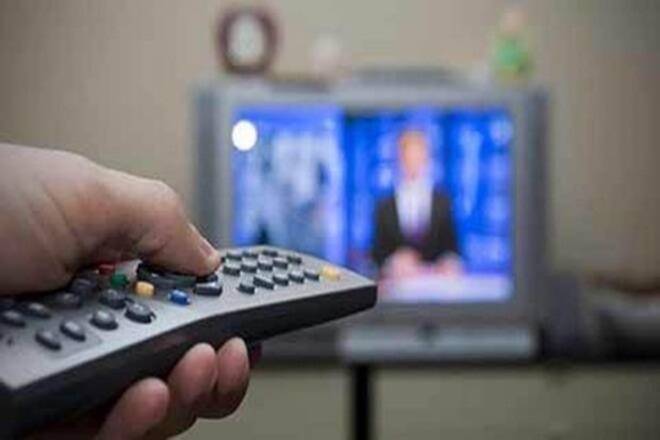
- In light of the aforesaid discussions, the challenge to the validity of the Principal 2017 Regulations and Principal 2017 Tariff Order on the ground that they violate the Petitioners’ fundamental rights under Article 14,19(1)(a), 19(1)(g), and 21 of the Constitution also fail. Para 62.
- Challenge To The 2020 Regulations Amendment And 2020 Tariff Order Amendment (Paras 63-101).
- The Petitioners in all the Petitions have impugned the 2020 Regulations Amendments and 2020 Tariff Order Amendment (impugned2020 Amendments) on the ground that they infringe their fundamental rights under Article 19(1)(a), 19(1)(g), 14 and 21 of the Constitution. Para 64.
- Only when the impugned 2020 Amendments were to be rolled out, the Petitioners filed the present Writ Petitions in February 2020, seeking to challenge the validity of the 2020 Amendments and the validity of Section 11 well as the Principal 2017 The Petitioners, therefore, are primarily aggrieved by the 2020 Amendments. Para 65.
- The Petitioners assail the underlined portion of Clause 3 of the 2020 Tariff Order Amendment reproduced above, and the arguments advanced before us are on the following four issues:
Issue I
If the à-la-carte price of a channel is more than Rs.12/- (which was earlier Rs. 19/-), the channel could not be included in a bouquet.
Issue II
The sum of maximum retail prices per month of the à-la carte channels forming part of bouquet shall in no case exceed one and half times the maximum retail price per month of such bouquet (i.e., “Aggregate Test“– 2nd twin condition – in mathematical terms, this means bouquets can be priced at a maximum of 33.33% discount qua the sum of à-la-carte prices of channels in the bouquet).
Issue III
The maximum retail price per month of anyone à-la carte pay channel forming part of such a bouquet shall in no case exceed three times the average maximum price per month of a pay channel of that bouquet (i.e., “Average Test“– 2nd twin condition).
Issue IV
The number of bouquets of pay channels offered by a Broadcaster shall not exceed the number of à-la-carte pay channels offered by such Broadcaster.
Issues II and III are ‘the twin conditions. Para 69.
- In Star India vs DIPP, the Supreme Court has held that the Principal 2017 Regulations and 2017Tariff Order are Intra vires to the Regulatory power contained in Section 36 of the TRAI Act. A Tariff Order issued after a consultation process thus falls within the Regulatory power contained in Section 36 of the TRAI Act. Para 74.
- In view of the above, the contention of the Petitioners that a Tariff Order is not law within the meaning of Article 19(2) and Article 19(6) of the Constitution, and therefore no restrictions can be imposed by a Tariff Order which affects the fundamental rights of the Petitioners under Article 19(1)(a). Article 19(1)(g) cannot be accepted and is accordingly rejected. Para 74.
F.The Four Challenges To The 2020 Tariff Order
Issue I – Cap Of Rs.12/- On Any Channel To Be Included In A Bouquet,
- The Authority has stated that the bouquet should be formed by bundling channels that are affordable and are in similar price brackets, and if high-value channels are allowed to be part of the bouquets, the basic objective of the framework that the niche channel should only be given to the consumer on his free will, will be defeated. Para 77.
- There simply cannot be any mathematical precision on the ideal cap for a channel to form part of a bouquet. Enough elbow room or play in the joints is required to be given to the Authority in price-fixation. The Court cannot substitute its opinion with that of an expert body like TRAI. Para 77.
- It needs to be emphasised that the cap of 12/- is only on a channel that forms part of a bouquet. The Authority has chosen not to place any cap on the MRP of à-la-carte channels, which do not form part of a bouquet. Thus, the reduction in the ceiling from Rs.19/- to Rs.12/-, for a channel to be included in a bouquet, in our view, cannot be said to be arbitrary or unreasonable Para 77.
Issue II – 1st twin condition (Aggregate test)– a cap on discount of 33.33% on the sum of à-la-carte prices of channels which can be offered on bouquets
- The Authority found that the popular channels are priced at MRP of 19/- to qualify to be part of a bouquet and then bundled with mostly low priced and less demanded channels. By adopting this business model, the Broadcasters maximise their reach even for not so popular channels, which increases their subscription revenues. Para 78.
- The consumers end up subscribing to channels not of their own choice, but as a compulsion and even paying for those channels which they are not inclined to watch, which in effect, results in an increase in their monthly payment for subscription of TV channels, apart from losing out on choice with free will. Para 78
- The Authority has displayed figures in the form of tables and charts to demonstrate that the Broadcasters are tactfully forming their bouquets which comprise many low priced but less popular channels and very few high priced but popular channels. Thus, channels having a wide variation in their à-la-carte prices are being clubbed together in a bouquet resulting in illusory pricing of pay channels to subscribers. Para 78.
- The Authority has observed that the consumers’ right to choose is paramount. As a body mandated by statute, TRAI cannot allow a situation where a business practice takes precedence over that right. The Authority has noted that for addressing the consumer concern, the possible options could be
- (i) to regulate or cap à-la-carte prices of channels; or
- (ii) to place reasonable restrictions on the formation of bouquets, without affecting the flexibility of the market players, either on the pricing of channels or packaging in bouquets.
- We reiterate and independently find that the manner in which bouquets are being pushed by manipulating the prices of the à-la-carte channels results in perverse pricing and deprive the subscribers of making an informed and real choice. The Authority has only stipulated the maximum discount given by the Broadcasters qua the sum of the a-la-carte prices of the channels in a bouquet.
- The autonomy of the Broadcasters has not been taken away, and the Authority has only sought to protect the interest of the consumers. Hence, it cannot be said that the cap on discount of 33.33% on the sum of à-la-carte prices of channels that form a bouquet (1st twin condition – Aggregate Test) is unreasonable or arbitrary. Para 82.
Issue IV– Cap on the number of bouquets not exceeding the number of à-la-carte channels offered by the Broadcasters.
- The Authority has noted that the formation of bouquets is nothing but bundling of a number of channels together and offering value for money for the consumers. Therefore, it does not make much sense if the number of bouquets of pay channels offered by the Broadcaster exceeds the number of pay channels offered by a Broadcaster. Para 83.
- On perusal of paragraphs 62 to 71 of the Explanatory Memorandum, it is noted that the Authority has analysed the data and considered the
comments of the stakeholders and has applied its mind and given cogent reasons. We find that the Authority has prescribed the cap on the number of bouquets in the interest of the consumers and to avoid creating confusion in their minds in choosing from many bouquets and avoiding unnecessary burden on the IT and billing system of the DPO. It is required to be noted that the cap prescribed is on the number of ‘bouquets’ only. We are of the view that capping the number of bouquets by the Authority cannot be said to be unreasonable or arbitrary. Para 84.
- Thus, the heart of the matter is ‘bouquets’ formed by the stipulations prescribed vide the aforesaid three Issues viz. Issues I, II and IV, are reasonable and cannot be said to be arbitrary, as indicated above. Para 85.
- It needs to be borne in mind that we are examining the challenge to the 2020 Amendments only on the touchstone of the violation of the fundamental rights of the Petitioners and the parameters of judicial review as discussed earlier. So long as a stipulation in the impugned 2020 Tariff Order Amendment is in the zone of reasonableness, it is not for this Court to sit in appeal over the decision of the TRAI, which is an expert body and to substitute the said decision. Para 86.
- Reasonableness has to be also examined from the standpoint of interest of the public to carry out the object and purposes of the TRAI Act. We are satisfied that the stipulation prescribed by the impugned 2020 Amendments only balances the public’s interest with that of the Broadcasters and maintains a level playing field that the Authority as the Regulator is duty-bound to do. Para 86.
- Violation Of Free Speech And Expression Under Article 19 (1) (a)
- We now come to the contention of the Petitioners that the 2020 Tariff Order Amendment violates their fundamental rights of free speech and expression under Section 19(1)(a) of the Constitution. It is submitted that the implementation of the impugned 2020 Amendments would result in a drop in circulation/viewership of channels, thereby narrowing the dissemination of information and infringing their fundamental right u/s. 19(1)(a).Para 92.
- Even assuming there is some drop in the circulation apprehended by the Petitioners on account of the stipulations prescribed in the impugned 2020 Tariff Order, including the stipulations on bundling of channels/formation of bouquets, the said stipulations are, in our view, in the interest of the public and seek to remedy the bouquets mischief and cannot be said to be unreasonable or arbitrary. The stipulations prescribed are part of the Regulatory exercise by the Authority of balancing the interest of the consumers with that of the Broadcasters and to achieve a level playing field. Para 92.
- In the light of the aforesaid discussion, it is not possible to accept the case of the Petitioners that the impugned 2020 Amendments violate the Petitioners’ fundamental rights guaranteed under Articles 14, 19(1)(g) and 21 of the Constitution. The stipulations prescribed by the aforesaid three issues viz. Issues I, II and IV would constitute reasonable restrictions within the meaning of Article 19(6) and cannot be said to be arbitrary. Para 91.
- For the reasons mentioned above and the reasons mentioned in the earlier part of this judgment, while dealing with a challenge to Section 11 of the TRAI Act, we are unable to accept the contention of the Petitioners that their fundamental rights under Article 19(1)(a) of the Constitution are infringed. In our view, the stipulations prescribed by the impugned 2020 Tariff Order Amendment would constitute reasonable restrictions within the meaning of Article 19(2) of the Constitution. Para 93.
- We reiterate that the aforesaid discussion only relates to Issues I, II and IV. As far as Issue III is concerned, we have dealt with the same hereinbelow. Para 94.
Issue III – (2nd twin condition – Average test) – Cap on the price of the channel that can be offered in a bouquet with reference to the average price of the other pay channels included in the bouquet
- Having per used the Consultation Paper dated August 16 2019,forthe 2020TariffOrderAmendment,wefindthattheaforesaidIssueIII,i.e.,the2ndtwincondition(AverageTest),didnotformpartoftheConsultationPaperThe2ndtwincondition(AverageTest)was not proposed for the principal 2017 Tariff Order consultation. Itwasnon-existentinthePrincipal2017 Tariff Order. This is an admitted position. Para 96.
- We, therefore, hold that the 2nd twin condition (Average Test) contained in the proviso to clause (3)(b) of the 2020 Tariff Order Amendment – is manifestly arbitrary and infringes the Petitioners’ fundamental rights under Article 14 of the Constitution. The 2nd twin condition (Average Test) contradicts Clause 11(4) of the TRAI Act, which mandates the Authority to ensure transparency. It is liable to be set aside and accordingly set aside. Para 100.
- For the foregoing reasons, we hold that the 2020 Amendments do not violate the Petitioners’ fundamental rights under Article 14, 19(1)(a), 19(1)(g) and 21 of the Constitution except to the extent that the 2nd Twin Condition (Average Test) contained in the proviso to Clause (3)(b) of the impugned 2020 Tariff Order Amendment, which is arbitrary being contrary to the mandate of section 11(4) of the TRAI Act of ensuring transparency and violates the Petitioners’ fundamental rights under Articles 14 of the Para 101.
-
Summary of Judgment-Upshot (Para 106/107)
- The upshot of the above discussion is as under:
- The challenge to the constitutional validity of Section 11 of the Telecom Regulatory Authority of India Act, 1997 (as far as it relates to Broadcasting Services) fails.
- The challenge to the constitutional validity of the Telecommunication (Broadcasting and Cable) Services Interconnections (Addressable Systems) Regulations, 2017, Telecommunication (Broadcasting and Cable) Standard of Quality of Service and Consumer Protection (Addressable Systems) Regulations 2017 (hereinafter referred to as “Principal 2017 Regulations“) and the Telecommunication (Broadcasting and Cable) Services (Eighth) (Addressable Systems) Tariff Order, 2017,fails.
- The challenge to the constitutional validity of the Telecommunication (Broadcasting and Cable) Services Interconnections (Addressable Systems)(Second Amendment) Regulations, 2020, Telecommunication (Broadcasting and Cable) Standard of Quality of Service and Consumer Protection (Addressable Systems) (Third Amendment) Regulations 2020 and the Telecommunication (Broadcasting and Cable) Services (Eighth) (Addressable Systems) Tariff (Second Amendment) Order, 2020, fails, except to the extent stated hereinafter.
- It is held that 2nd twin condition (Average Test) contained in the proviso to Clause (3)(b) of The Telecommunication (Broadcasting and Cable) Services (Eighth) (Addressable Systems) Tariff (Second Amendment) Order, 2020 is arbitrary, being contrary to the mandate of Section 11(4) of the TRAI Act of ensuring transparency and violates the Petitioners’ fundamental rights under Article 14 of the Constitution.
-
SPECIAL LEAVE PETITION 10801/2021TO SUPREME COURT
- Within a few days of the pronouncement of the judgment by the Bombay High Court, the Indian Broadcasting Foundation (IBF) and a number of Broadcasters filed a series of Special Leave Petitions to the Supreme Court.
- As per media reports, IBF, Star/Disney India, and SPNI and others challenged the Bombay High Court’s decision to “grant more powers” to the Telecom Regulatory Authority of India (TRAI) to regulate pricing and impose restrictions on bouquet discounts if it is necessary in the larger ‘public interest’. The HC has relied on the Supreme Court’s judgement on airwaves in the Ministry of Information & Broadcasting (MIB) vs Cricket Association of Bengal (CAB).
- The Broadcasters also argued that the Bombay High Court had” snatched away” the fundamental rights of the Broadcasters by allowing TRAI to impose restrictions in the ‘public interest’. The Broadcasters also challenged the amended Tariff Order (NTO 2.0) provisions like bringing down MRP to Rs 12, imposing twin conditions, and placing restrictions on bouquet discounting.
- At the hearing held on 08.2021, the Supreme Court rejected the interim application for stay of the High Court order dated 30.06.2021.
- The Supreme Court stated
- As far as the prayer for grant of interim relief is concerned, taking into consideration the rival submissions made by learned senior counsel appearing for the parties, we are not inclined to grant the same at this stage.
- At the hearing on 10.2021, the Supreme Court again rejected the plea for stay and stated:
- The request for interim relief is rejected at this stage, as this batch of matters is directed to be listed before the appropriate Court for final disposal on 30.11.2021.
- In order to facilitate the disposal, we request the learned counsel appearing for all the parties to file their written submissions [not exceeding three pages] on or before 11.2021.
- It is made clear that convenience compilations filed by Ms Liz Mathew, learned Advocate for “Indian Broadcasting and Digital Foundations & Ors.” shall be taken as base volumes.
- Copies of these convenience compilations shall be shared digitally with all the learned counsel, who may make cross-references to the particular pages from these convenience compilations in their written submissions.
- We also request the learned counsel to indicate the time frame required by the counsel for their oral arguments in their written submissions.
-
AFTERMATH OF REFUSAL OF INTERIM STAY BY SUPREME COURT
- The consequence on the Broadcasters was that with the refusal of interim relief by the Supreme Court, they were forced into implementing the mandates of NTO:2. The Broadcasters had successfully failed to do so right from 01.03.2020through legal stratagems.
- On 13.10.2021, TRAI wrote to the Broadcasters to announce their new rates to implement NTO:2. It stated
- “The Hon’ble High Court of Judicature at Bombay, vide its Judgement dated June 30, 2021, passed in the Writ Petition No 680 of 2020 [(WP (L) No 116 of 2020)], titled as the ‘Film and Television Producer’s Guild of India Ltd & Another vs The Union of India & Another’ and other connected matters therewith, has upheld the validity of New Regulatory Framework 2020 except for the condition of the average test provided in the third proviso to sub-clause (3) of clause 3 of the Tariff Amendment Order 2020.“
- “Accordingly, all such Broadcasters who have not complied so far are required to comply with all provisions of New Regulatory Framework 2020 as upheld by Hon’ble Court of Bombay and report compliance to the Authority within 10 days of issue of this letter.”
3. In compliance with this direction, Star TV filed its Reference Interconnect Offer on 16.10.2021 with TRAI by taking its driver channels out of bouquets and pricing its driver entertainment and sports channels higher than Rs 12, thereby keeping them out of any of its revised bouquets. It simultaneously announced the launch of new channels, including 9 new HD channels and 7 new SD channels between December 2021 and January 2022; the 16 new channels will take its total TV channels to 78.
- 4. Other major Broadcasters followed suit, like Zee/Sony/Sun TV/Viacom and Times TV. Barring Times TV, in effect, all the driver channels have been priced higher than 12 and was clearly intended to put pressure on TRAI to either withdraw NTO:2 or to concede the Special Leave Petition in the Supreme Court.
- 5. The announcement of new rates was accompanied by a series of planted articles in media, especially digital media, trying to scare the viewer that the Cable Rates would go out of control when the new a la carte rates were put into effect. The articles were one-sided and amounted to a vicious attack on the Regulator and its power under the TRAI Act’s Section 11 (2).
- 6. One of the Broadcasters leaning digital websites claimed that:
- “Instead of reducing channel prices by offering them in the bouquets and TRAI’s unilaterally and arbitrarily fixed maximum price, the Star network has decided to increase driver channel pricing and take them out of the bouquets.
- This is what Sony and TV 18 are also announced. XXX.com believes that with content and other platform costs, increasing the network’s decision to unbundle and sell at higher MRP is an essential step demanded by market realities.
- To us, it seems to be the last and only resort left to the harried television broadcasting industry at the mercy of TRAI’s meddlesome and heavy-handed regulation.
- This will ultimately give the lie to Trai’s claims of its NTO:2 being pro-consumer. Their monthly cable bill will price, and if they wish to continue to retain access to the already depleted number of channels, they were receiving a bracket (thanks again to TRAI’s regulation till November 2021).
- Hopefully, other oppressive aspects of the arose NTO will be weeded out for being violative of the inalienable rights to conduct permitted business and enterprise freely and without interference.
- When the Honourable Supreme Court takes up the pleas against NTO:2, we hope we shall see the end of the oppressive restrictive and non-inclusive approach of Trai towards the regulation of TV broadcast business in India.”
- While the reaction of MSOs and DTH Operators has been muted, the Tamil Nadu Digital Operators Association on 10.2021issued a legal notice (not to the Broadcasters) but to TRAI demanding that the Regulator take action against the Broadcasters to bring down the proposed a la carte prices. Its counsel stated:
- Major Broadcasters have issued Reference Interconnect Offers where it can be calculated that majorly subscribed channels by the consumers will be inflated by 100% to 200%.
- It is pertinent to mention here that when OTT service providers are trying to make services more affordable to increase the subscriber base, the service providers of this industry will have to increase their rate substantially, which will cause a loss of subscriber base LCOs and MSO’s.
- These excessive prices will undoubtedly hurt the subscriber base of cable operators whose subscribers come from rural areas where income levels are comparatively low.
- Any regulation/direction/order implemented by Trai should lead to the growth and development of service providers and consumers.
- Ultimately TRAI was forced to go public with its warning to the Broadcasters that they were raising pricing under the guise of implementing the NTO:2Tariff Order. In a Press Release issued on 10.2021, it was quoted by Press Trust of India (PTI) to state:
- “The Telecom Regulatory Authority of India (TRAI) has warned the Broadcasters saying that it will take action, if necessary, in the interest of consumers and the Sector. The Regulator on Friday said that some of the Broadcasters are “exploiting” the freedom they have got for a-la-carte pricing of the TV channels.
- According to the PTI report, TRAI said that some leading Broadcasters are taking advantage of the new rules and have increased the prices of popular channels or channels, driving traffic. These channels are primarily the sports and general entertainment channels (GEC).
- The Regulator said that the New Tariff Order (NTO 2.0) and Broadcast Regulations are blamed for the impending price increase. TRAI noted that a misleading campaign has been running to blame the NTO 2.0 for the price increase. As per TRAI, it is being publicised that people who go for the top sports or the GEC channels will have to pay Rs 100 But this is not true.
- TRAI said that it is “a fictional pretension.” The Regulator has clarified that NTO 2.0 does not put forth any condition where the subscription prices are increased.
- In a statement, TRAI said that it recognises some of the prices are unsustainable because they are not driven by the demand or are market-determined prices. Thus, the Regulator finds these prices against the interest of the consumers.
- According to the Regulator, NTO0 has already benefitted the customers a lot, and it is not meant to increase prices. The Broadcasters are just using it as a tool to drive prices up.
- TRAI said that the channel pricing has remained under the prescribed ceiling for 15 years since The Regulator also clarified that some price modifications have been done after passing a part of the benefits to consumers.
FINAL COMMENTS
- This writer has been actively engaged with the electronic media industry for over three decades and has observed that all the various regulatory initiatives taken by the Regulator have been strongly challenged by the Broadcasters right from the time of the first writ petition in 2005 in Writ Petition 24105/2005 filed by Star vs UOI to the latest SLP10801/2021 pending in the Supreme Court.
- In the past legal disputes, at least, the Broadcasters attempted a civilised dialogue with the Regulator. This writer remembers attending lengthy meetings organised by TRAI in earlier regulatory dispensations to bring all service providers on a smooth implementation path.
- This is the first time that a series of vicious attacks have been launched by Broadcasters casting aspersions on TRAI’s legislative and constitutional competence to regulate the electronic media industry. Despite the warning issued by TRAI recently, the attacks continue unabated.
- The Broadcasters are well aware that the Government of India entrusted Trai to be the Broadcast and Distribution Regulator on a nudge from the Delhi High Court in the CAS implementation judgment of December 26, 2003.
- As brought out in the Press Note on 01.2004issued simultaneously with the notification making TRAI the Broadcasting and Distribution Regulator, the objective was to bring order and stability to the industry.
- The sponsored articles indicate increasingly intense frustration that despite the series of highly costly litigations over the past sixteen years, the Regulator has succeeded in bringing about a modicum of consumer-related tariff and interconnection regulations.
- In the past 17 years, TRAI has done a magnificent job creating a level playing field that keeps consumer interest paramount.
- These Regulations have helped in completing the digitisation of the cable industry on a massive scale. The Regulations have also helped the MSOs and DTH operators to offer competing services at affordable rates.
- As the issue relating to NTO:2 is pending a final hearing in the Supreme Court and is sub judice, it would be prudent to await the final verdict to determine the New Tariff Order stands the test of the approval of the Supreme Court.
- It is noteworthy that two earlier attempts to scuttle TRAI’s Authority to regulate this industry were rejected by Delhi HC in WPC 24105/2005 in 2007titledStar India Limited vs Union of India for which SLP was rejected and by the SC in Star India Private Ltd. vs Departmental Industrial Policy and Promotion and Ors., (2019) 2 SCC 104 (Star India vs DIPP) in
- While the Cable Industry was regulated in 2004 onwards by the Cable Ordinance converted into an Act in 2005, the Broadcasters are still regulated only under Downlinking and Uplinking Regulations issued by the Ministry of Information and Broadcasting from time to time.
- The Supreme Court in the CAB 1995case1995AIR 1236 1995 SCC(2)161 held that the “airwaves or frequencies are public property. Their use has to be controlled and regulated by a public authority in the interests of the public and to prevent the invasion of their rights. Since the electronic media involves the use of the airwaves, this factor creates an in-built restriction on its use as in the case of any other public property.”
- Three efforts by the Government to implement the CAB judgment being the Broadcast Bill of 1997, the Broadcast Regulation Bill of 2007, and the Convergence Commission Bill of 2001, were successfully scuttled by forces unwilling to subject themselves to the Rule of Law.
- As we live in a converged era, the powers of the Ministries of DOT/MIB/MEITY should be handed to a revived and autonomous Convergence Commission by an Act of Parliament.
- There is still a month to go before the Supreme Court starts finally hearing the arguments by both Broadcasters and the Regulator. All major regulatory initiatives have always been taken in a spirit of dialogue and discussion involving all sections of service providers and consumer representatives. This can be attempted even today by TRAI to ensure smooth implementation.
- Meanwhile, as so much time has been lost in litigation, extending the date of implementation suo moto by TRAI by another 6 months will benefit the entire industry and the huge number of television viewers.
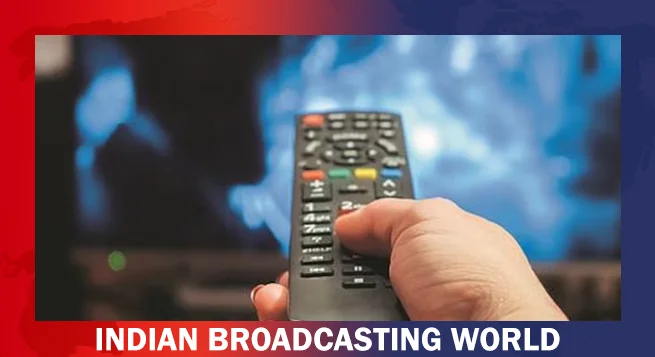 SC tells petitioner to take plea on OTT platforms to govt.
SC tells petitioner to take plea on OTT platforms to govt.  Network18 TV news biz revenue up 28% in Q4 FY24
Network18 TV news biz revenue up 28% in Q4 FY24 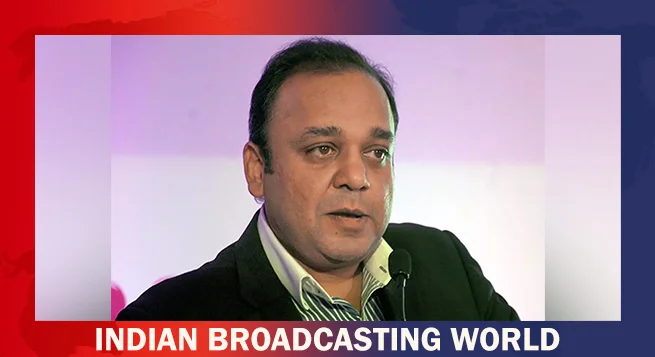 As Zee gets lean, Punit Goenka in charge of critical verticals
As Zee gets lean, Punit Goenka in charge of critical verticals  TV distributors turn to bundling to combat churn
TV distributors turn to bundling to combat churn 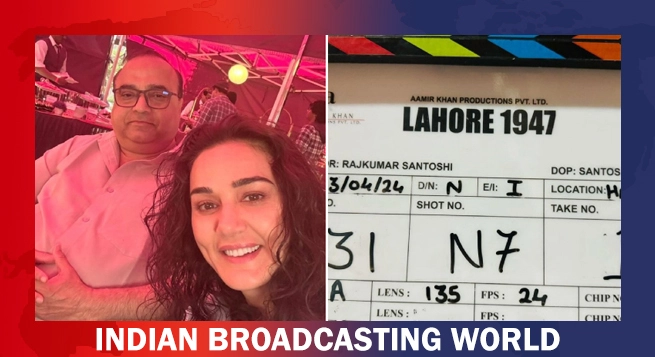 Preity Zinta commences shooting for ‘Lahore 1947’
Preity Zinta commences shooting for ‘Lahore 1947’  Zee Cinema announces World Television Premiere of ‘Tejas’ on April 28
Zee Cinema announces World Television Premiere of ‘Tejas’ on April 28 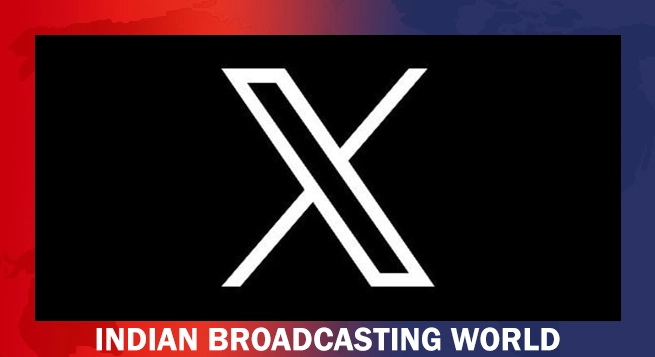 X platform challenges YouTube, announces launch of TV App
X platform challenges YouTube, announces launch of TV App 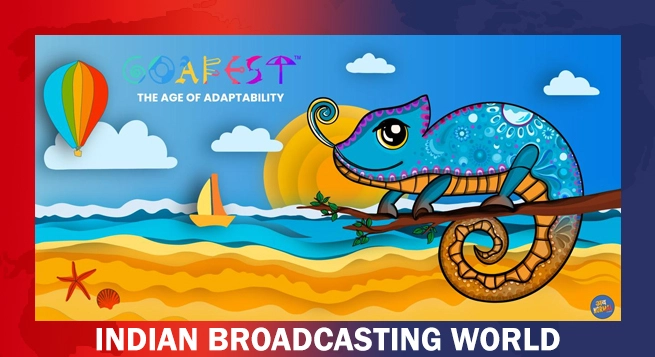 Goafest 2024 unveils festival theme ‘The Age of Adaptability’
Goafest 2024 unveils festival theme ‘The Age of Adaptability’ 

